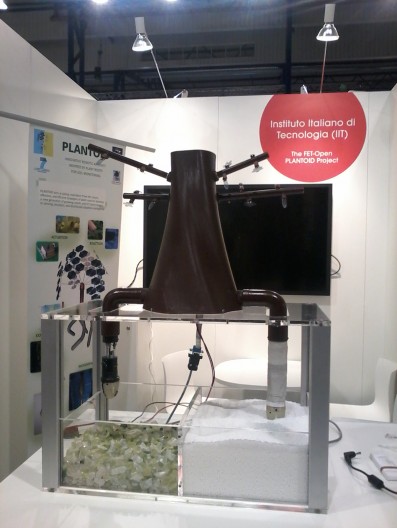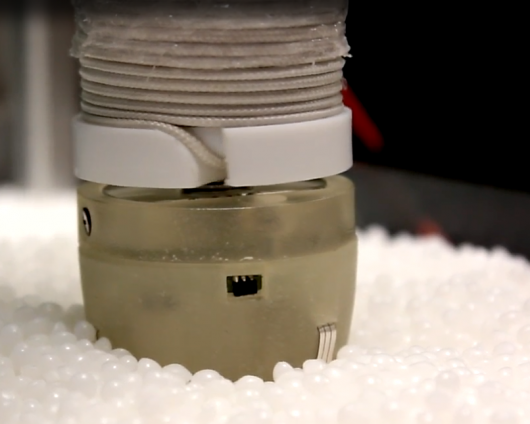We’ve seen plenty of animal-inspired robots these past few years — a lightning-fast cheetah, a super-swift snake, some pollution-sensing fish — but we haven’t seen much inspiration drawn from plants, because they just sit there, right? Well there’s more to plants than you may think. With that being said, Europe’s PLANTOID project consortium is currently in the process of creating a tree-like robot. And get this: its descendants may one day find use in the exploration of other planets.

The PLANTOID robot on display.
Inside the 3D-printed plastic trunk that serves as the base of the PLANTOID robot is a microprocessor to guide the robot’s motions. Extending from the sides of the trunk are four plastic branches, each with leaves, which are actually sensors capable of detecting and measuring factors including temperature, humidity, touch, gravity, and chemical elements. Though that’s more than impressive, down in the robot’s roots are where the real action happens.
Bending like a tentacle, one of the roots has a tactile-sensor-equipped tip, which wiggles its way through the dirt so the root can change direction when it runs into an obstacle. It can also be equipped to sense and avoid toxic substances nearby.

One of the PLANTOID robot's roots has a rotating tip and can grow down into the substrate.
The other root’s job is to grow down into the substrate. Because it has a rotating tip that extrudes a coiled cord behind it as it turns, it can form a tube-like root by joining the coils together, which continues to grow as long as the tip keeps turning.
Later down the road, the PLANTOID robot is set to be further developed. One day its roots may be able to lead to better endoscopic surgical tools, or for tools used in locating victims buried in debris after a disaster. Complete versions of this robot can also one day monitor soil conditions and pollutant levels on Earth, and even find use gathering environmental data on neighboring planets.
Since its beginning in 2012, the PLANTOID project has been led by the Istituto Italia di Tecnologia, with the other members consisting of the Institute for Bioengineering of Catalonia (Spain), the Università degli Studi de Firenze (Italy), and EPFL (Switzerland). Researchers are currently looking into adding other functions to the roots and are studying ways in which the robots can draw power from the environment. The project is scheduled to wrap up next April.
Story and images via Gizmag.
Advertisement
Learn more about Electronic Products Digital





